Aventuras De Viaje's Blog, page 2
September 17, 2018
Traditional Mauritian Food
The best traditional Mauritian food is not in your resort restaurant. Take to the markets and street corners to sample the diverse food culture. The traditional street food of Mauritius is a mix of Creole, French, Chinese, and Indian. And thanks to the fertile soils, you can find plenty of fresh fruits and vegetables.
Save BIG on Your Next AdventureGet Your Copy of How to Travel on a Budget Today
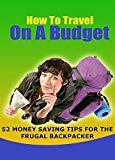
How To Travel On A Budget: 52 Budget Travel Tips

Price Disclaimer
1. Fish Vindaye
A curried fish recipe served with rice and pickled vegetables.
The curry has mustard, garlic, ginger and onion.

2. Rougaille
A hot creole tomato stew with onion, garlic, chillies, and other spices. Once cooked, they often add fish or meat.
Rougaille is a typical side dish and is fast to make.

https://commons.wikimedia.org/wiki/Fi...
By JPS68 [CC BY-SA 4.0 ], from Wikimedia Commons
3. Millionaire’s Salad
The Millionaire’s Salad is a palm tree heart mixed with salad leaves and various seafoods. They top it with a red sauce dressing.

4. Curry
Mauritian curries are more herb based as opposed to Asian coconut curries. They come in a variety of flavors.
The common Creole curry is spicy. Delicacy curries such as bat, octopus, and wild-boar are also available.

By Magalie L’Abbé via Flickr.com
5. Salmon Tandoori
This is salmon which they bake with a traditional tandoori coating. Eat it with naan bread.

6. Mine Frites
A classic dish adapted from the Chinese. Fried noodles! The stir fry noodles contain vegetables, meat and/or tofu, egg, and chili.

7. Dholl Puri
This is a Mauritian take on classic Indian food. Dholl Puri is like bread wrap made from yellow split peas. Inside is curry and/or pickled vegetables.

8. Banane Flambée
A delicious dessert of bananas and ice-cream. They top it with a sweet rum sauce and if you’re lucky, you’ll also get a fried pineapple.

9. Boulet
Boulet are Mauritian style dumplings. There is a variety of them made from fish, tofu, or meat. They steam the dumpling and serve it in a soup with chili. A great late afternoon snack.

10. Biryani
Biryani is an Indian food that has made its way to Mauritius. It is rice, meat, and vegetables cooked with spices. You can also get vegetarian.

Inspired? Pin it for Later↓


Learn the Money Saving Secrets from 15+ Years of TravelGet Your Copy of How to Travel on a Budget Today

How To Travel On A Budget: 52 Budget Travel Tips

Price Disclaimer
That’s all for this list of typical Mauritian food. With the awesome mix of cultures Mauritius is a foodies dream. It is one of the few places in the world with a mix of Asian and European foods as a traditional base.
Did you enjoy this list of Mauritian dishes? If so, please share it with your friends.
The post Traditional Mauritian Food appeared first on Survive Travel.
September 13, 2018
Best Minimalist Travel Gear
Here are my picks for the best minimalist travel gear. Everyone needs different things when traveling, so I’m not about to tell you my entire minimalist travel packing list. But I do have a few suggestions of things I think are minimalist travel essentials.
Of course, even these may not be for everyone. I work online and love the outdoors so the items here reflect that. But I am sure most minimalist travelers and even non-minimalist travelers will find at least a few of these items useful.
Towards the end of this article, I also give some general minimalist travel packing tips.
Best Minimalist Travel Gear
Apple Mac
Since I travel a lot and with carry-on only, weight is a big deal for me. But I also need good functionality for work. Macs are the answer.
Many netbooks are lighter, but running an internet business on one is painful. I suffered for 5+ years doing it before I finally coughed up the money for a Mac. Now I can’t see myself ever going back to Windows.
The obvious downfall of Macs is the price tag. Netbooks are way cheaper, but you get what you pay for. For me, it is worth the money.
Find the best deals on Macbooks here.
Samsung Galaxy S7
Not the Galaxy Note! They are not allowed on planes since they catch fire. Also, they are too big for my liking. The size of the S7 is about as big as I like to go.
Previous to my S7 I bought cheap local phones from whatever country I was in. Huawei and Oppo were my last 2. Actually, these 2 brands are getting better in quality so they are still good picks.
For my latest phone, my focus was to get a good camera. I take a lot of pictures for this blog, so a decent camera is a top priority. And if you have seen any of my posts, especially my earlier ones, you’ll agree I need all the help I can get.
A decent camera phone is the ultimate in minimalist travel photography!
After a fair bit of research, I narrowed my choice between an iPhone or a Samsung Galaxy S7. I chose the S7. It has a great camera, is water resistant, and is almost 1/3rd the price of the latest iPhone.
I considered an older iPhone which would bring down the price and the camera would still be decent. Then the news came out that iPhone released software that made all the phones slow down. It was the clincher for me not to get one.
Click here for the best prices on the Samsung Galaxy S7.
Even if you don’t want an S7, any smart phone is a great piece of travel kit. Other than the normal call, text, and web functions, there are a many apps which makes traveling much easier. My favorites are:
Camera
Googlemaps
Google translate
XE Currency converter
Calculator
Taxi apps (Uber, Grab, etc)
Entertainment (music, video, and social media)
Note that if you travel to China, Google and some social media apps won’t work (including Facebook and Twitter). There are many other options though.
Portable Powerbanks
This item is great for those long day trips when I need to keep my phone charged. It will also charge my pocket wifi hotspot.
There’s not one brand I really recommend, but don’t buy a generic one from the local street market. They never last long. I’ve had my current one by XiaoMi since 2015 and it is still working great.
Check out the latest in portable powerbanks here.
Minimalist Travel Shoes
So the first 3 items cover me for minimalist business travel. Now we move into the fun stuff – minimalist travel gear for the outdoors.
I do a lot of walking, so having good minimalist travel shoes is important for me.
I travel with 2 types of footwear. One pair of casual shoes and one pair of sandals. They are both minimalist barefoot shoes made by Xero.
There are many brands that make barefoot shoes, and every time I need a new pair (about once every 18 months) I re-reseach them. Since 2013, I have chosen Xero for both.
When buying my minimsalist footwear I look at 4 things. Functionality, weight, price, and style.
Functionality: I can (and do) use my sandals and shoes for outdoors activities and casual wear. I even use my shoes at weddings, although that’s pushing it a bit.
Weight: They are minimalist so the shoes are lighter than most. A pair of flip flops might be lighter than my sandals, but you can’t go hiking in flip flops. I can in my Xero sandals.
Price: Well, they aren’t super pricey, but they are not cheap either. Not compared to a local pair from the market anyway. But in comparison to other brands of minimalist shoes, they are competitive. On the website they have a “clearance page”. This actually helps me decide which type of sandals to get. They also have sales a couple of times a year so it’s a good idea to join their mailing list.
Style: The biggest problem most people have with minimalist shoes is they look shitty. Not Xero’s. I mean, some of them do, but they have a couple of nice looking casual models. Mine have gotten compliments more than once.
Get your Xero shoes and sandals here.
Sawyer Water Filter Bottle
This is a great piece of kit which has saved my skin more than once. It also saves money and the environment.
The Sawyer Water Filter Bottle is a bottle with a built-in water filter. But not like your average water filter at home. With this, you can make tap water from a developing country drinkable.
If I am staying in one spot for more than a few days, I will buy a big bottle of water (like 6+ liters). But I hate buying 1L bottles or less. It’s a waste of money and is terrible for the environment. It’s much better to fill up my sawyer bottle.
This water bottle is also great to take hiking. If I decide to extend my hike or get lost (both happen often) I am not worried about running out of water. I can fill this up with whatever water source I see along the way.
Note: If the water is super dirty, I will filter out the visible dirt first. I also carry water purification tablets in my survival kit, but very rarely use them.
If you don’t like the actual water bottle, there are other options also. The squeezable pouch is good, or you can get the filter on its own and use it with your own bottle.
Check out the full range of Sawyer Water Filter products here.
Minimalist Travel Backpacks
There are many candidates for the best minimalist travel backpack, but in the end, I choose none of the big brand names. For me, the best minimalist travel bag is a generic lightweight pack away bag. Actually, I use 2. One is slightly larger than the other, and the smaller one doubles as a daypack when I go exploring.
Packaway bags are the best for minimalist travel. They are super light and easy to replace. Also, they are cheap and can be replaced easily from most street markets and online.
I do have some criteria though.
At least 2 pouches. The main one and a front one.
Side mesh pockets, big enough to fit a small water bottle.
Zips that I can put a small padlock through to lock at least one of the pouches.
Dry Sacks
I used to be all about dry sacks, but they are bulky and heavy. You know what works just as well? Plastic bags! Use a few of them though.
I do have one “proper” waterproof bag. It is to put my phone in so I can take pictures underwater. But I don’t buy one of those expensive Lifeproof ones. I use a universal waterproof phone pouch. That way I can also put my money in it. If you do get one, make sure you can still use your buttons with it.
Sarong
A sarong is a really good bit of kit with heaps of uses. I’m not going to list them all here… there are way too many. The main things I use it for are a towel, to block out light, a blanket, and as a sarong.
DISCOVER 16 WAYS TO USE A SARONG WHILE TRAVELING
Emergency Poncho
I don’t carry a Gortex raincoat, or any raincoat for that matter. They are too heavy and bulky to travel with. If you go on multiday hikes in cold countries, then yes, get a good jacket. But I stick to the tropics and day hikes. Also, when I do multiday hikes, I hire gear.
But even in the tropics getting wet is no fun. And if hiking or camping it can be dangerous. So I always carry an emergency poncho. Besides keeping me dry, it makes a good emergency shelter if I decide (or am forced to) camp out unexpectedly.
You don’t have to get a super good emergency poncho, but you don’t want cheap crap either. Get one that’s not heavy, but not ultra thin. The thickness of a thick garbage bag is good. In fact, a thick, large garbage bag with a head hole cut out of it is almost the same thing!
Get yourself an emergency poncho here.
Travel Survival Kit
These last few things are general minimalist packing for travel tips. They cover non-specific items.
This first one is actually a bunch of items, and most of them are not “brand names”. It is my airplane safe travel survival kit. It has medical, repair, and general survival items. Most of these items are at least dual-use and I can replace them at any local market or shopping center.
Here’s a complete list of what’s inside.
The following are in a plastic bag or in my pocket. I take them almost everywhere I go:
Survival keyring (compass, paracord, led light, pendrive)
Tiger balm
Sunscreen
Hand sanitizer
Toilet tissue
Plastic spoon
These items are in a hard plastic container. They stay with my main pack unless I’m going on a multi-day adventure.
Spare bankcard and 50-100 US dollars (in $20 notes)
Pain killers (ibuprofen and something strong, e.g., Panadene forte)
Antihistamine
Cold and flu tablets
Antibiotics for gastro
Water purification tablets
Sewing Kit (needle, thread, buttons)
Measuring tape
Bandaids
Duct tape
Survival blanket
Magnesium stick
Tweezers
Safety pins
ID Photocopies
Pencil
Cotton buds
Lockpicks
High visibility reflective strip
Minimalist Travel Clothes
My minimalist travel wardrobe changes from time to time but is pretty much this:
2 t-shirts
2 pairs of shorts
1 set of thermals
1 singlet
1 hat
Sunglasses
A lightweight packaway jacket
Socks and underwear
Minimalist Travel Toiletries
Obviously, I have things like a toothbrush, toothpaste, etc. so I’m not going to go into this much. There are 2 items I want to highlight though.
The first is a small travel towel. My sarong is my first go to when I don’t have a normal towel. But sometimes I don’t want to get that wet. So I have a backup travel towel. Maybe this is not 100% necessary and if I was every overweight on a plane it would be the first thing to go. But it is incredibly useful.
Take a look at the type of towel I mean here.
The other thing is coconut oil. This is so useful on so many levels. There are too many things to list here, so I wrote a separate article on the uses of coconut oil for travelers.
Inspired? Pin it for Later↓


Minimalism is something I think most people can really benefit from, especially travelers. It is good for your mind, the environment, and your wallet.
Mind. When you have less stuff, you think clearer. Seriously. Try working at a desk with lots of clutter compared with a clear desk. You will be more productive with the clear one. It also gets rid of the “keeping up with the Jones’s” mentality, which seems to bring a lot of people unnecessary anguish.
Environment. When you use less, you waste less, and corporations will make less.
Wallet. When you want less, you buy less.
Well, there you have it. My picks for the best minimalist travel luggage items.
I know at the start I said I wasn’t going to tell you my entire minimalist travel packing list. There are a couple of items not on this list, but it is almost everything!
All my stuff is less than 7kg. That way I can fly with carry on only.
Did you find these minimalist backpack travel items useful? If so, share this article with your friends.

The post Best Minimalist Travel Gear appeared first on Survive Travel.
September 2, 2018
10 of the Best Things to do in Costa Rica
Costa Rica is a tropical paradise with lots to see and do. From unspoiled coastlines to lush rainforest and everything in between. You can chill on the beach, spot wildlife on land or in sea, or partake in any number of adventure sports. Here are 10 of the best things to do in Costa Rica.
10 of the Best Things to do in Costa Rica
1. Manuel Antonio National Park
Manuel Antonio National Park is famous for its natural diversity. Along the hiking trails of this 680 hectare park you find rainforest, beaches, mountains, coral reefs, and more.
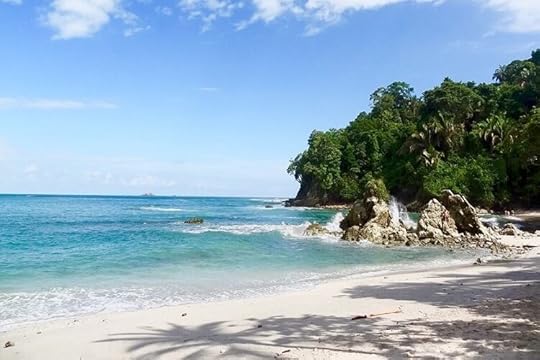
By Michelle Tran [CC BY-SA 4.0 ], from Wikimedia Commons
2. Poás Volcano
The Poás Volcano is an active stratovolcano which has erupted 40 times since 1828. The latest eruption was in 2017 and now the volcano has a 2.5 kilometer safety perimeter.
Near the summit are two crater lakes. Laguna Caliente (“hot lagoon”) is one of the world’s most acidic lakes and the bottom of it is covered with liquid sulfur. By contrast, Lake Botos is cold, clear, and surrounded by a cloud forest.
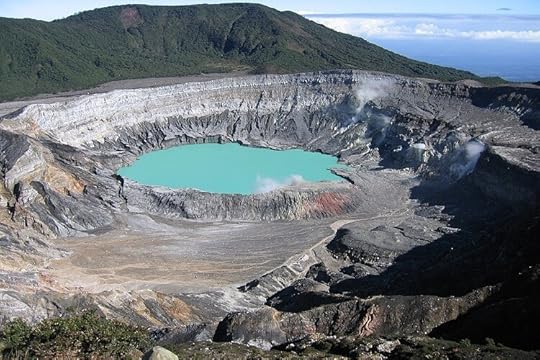
By Peter Andersen [GFDL, CC-BY-SA-3.0 or CC BY 2.5 ], from Wikimedia Commons
3. Arenal Volcano National Park
Arenal Volcano is and active volcano. The surrounding park has hot springs and lots of wildlife. Inside the national park is the Las Coladas Trail, Lake Arenal, and the dormant Cerro Chato Volcano.
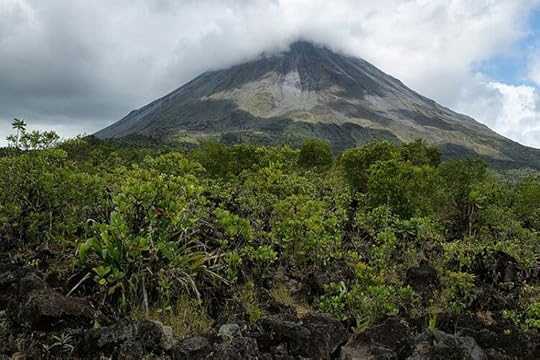
By Christophe Meneboeuf [CC BY-SA 3.0 ], from Wikimedia Commons
4. Lake Arenal
Lake Arenal is the largest lake in Costa Rica. It boasts 85-square-kilometreand up to 60m in depth. The old town of Arenal are at the bottom of the lake! The new town is on higher ground. Both inside and outside the lake teems with wildlife.
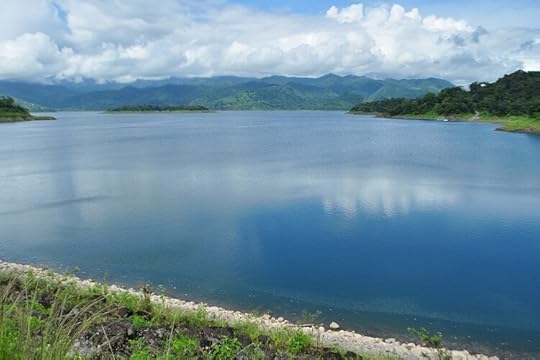
5. Bahía Drake
Bahía Drake is a small bay on the southwestern coast of Costa Rica. This low-land tropical rainforest is a bit off the beaten track, but you can get there by plane, boat, or 4×4 in the dry season.
The best things to do in Bahía Drake are to go snorkeling/diving in Caño Island and hiking in the Corcovado National Park.
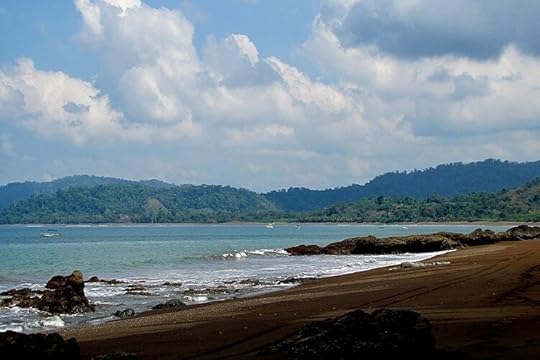
By José R. [GFDL or CC BY 3.0 ], from Wikimedia Commons
6. Cahuita National Park
Cahuita National Park encompasses land and water. There is a 600-acre reef which is fantastic for snorkeling. There are also many land animals and birds to see.
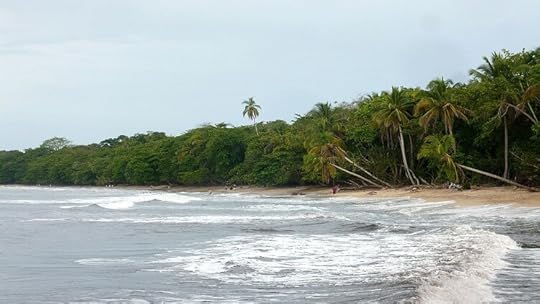
By Haakon S. Krohn [GFDL or CC BY-SA 3.0 ], from Wikimedia Commons
7. Tortuguero National Park
The beaches of Parque Nacional Tortuguero are famous nesting grounds for sea turtles. You can take a boat down the creeks through the rainforest to spot many types of flora and fauna.
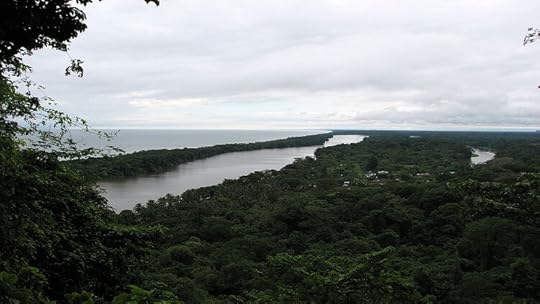
By Leyo [GFDL or CC BY-SA 2.5 ch], from Wikimedia Commons
8. La Fortuna Waterfall
La Fortuna Waterfall is at the base of the Chato volcano. There is a short hike to get to the 75m high waterfall. Once there you can swim in the stream and small rapids.
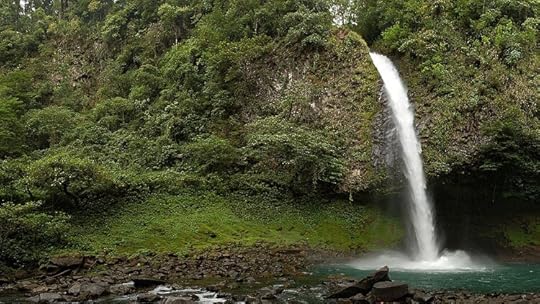
By Photo by and (c)2007 Derek Ramsey (Ram-Man) [GFDL 1.2 or CC BY-SA 4.0 ], from Wikimedia Commons
9. Isla del Caño
Isla del Caño is a small island in the Corcovado Bay. In the Caño Island National Park there are beaches, snorkeling, whale watching, and more. It also has some interesting artifacts, such as stone spheres carved by early civilizations.
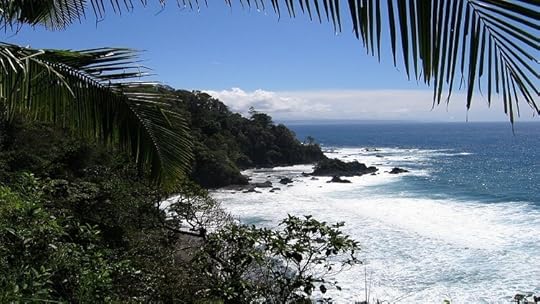
By Peter Andersen [GFDL or CC-BY-SA-3.0], from Wikimedia Commons
10. Caño Negro Wildlife Refuge
The Caño Negro Wildlife Refuge is a wetlands site surrounding Lake Caño Negro. To explore the forests, grasslands and marshes of the area you will need to get on a boat. If you are lucky you may spot from endangered species such as cougars, jaguars, Geoffroy’s spider monkey, and more. In the dry season there are thousands of migratory birds.
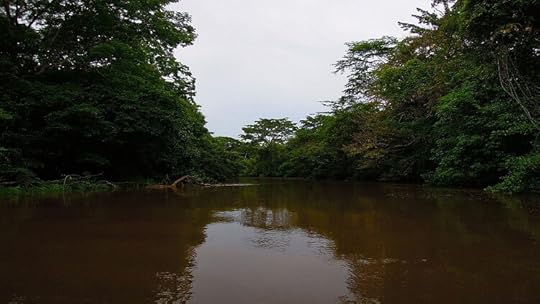
By Rquesada [CC BY-SA 3.0 ], from Wikimedia Commons
Inspired? Pin it for Later↓


Beaches, wildlife, rainforest, volcanoes, and more. Costa Rica really is somewhere anyone can have a great time. Whether you want relaxation, adventure, or a it of both, Costa Rica has it.
Did you enjoy this list of top things to do in Costa Rica? If so, please share it with your friends.
The post 10 of the Best Things to do in Costa Rica appeared first on Survive Travel.
September 1, 2018
The 10 Best Things to do in Mauritius
Discover the 10 best things to do in Mauritius. Mauritius is an island nation about 2,000 kilometers off the coast of the Africa. While not a very big country, there is enough to keep any tourist busy for at least a few weeks. From its natural wonders to its unique culture, there is something for everyone in Mauritius.
The 10 Best Things to do in Mauritius
1. Le Morne
At the South-Western tip of Mauritius you can find the La Morne peninsula. Surrounded by a lagoon, its summit is 556 metres above sea level. Among the slopes are many caves and overhangs.
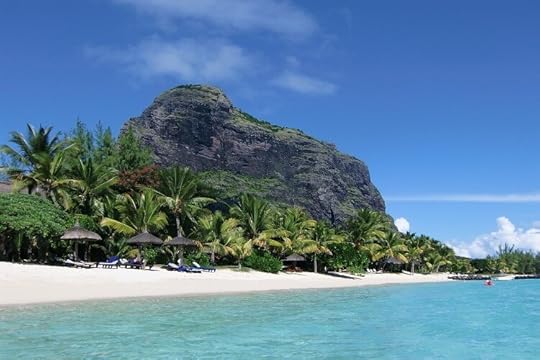
2. Black River Gorges National Park
This 6500+ hectare national park is home to over 300 species of flowering plants and the Pink pigeon, one of the rarest birds in the world. Inside are hiking trails, waterfalls, vistas, and other amazing natural scenery.
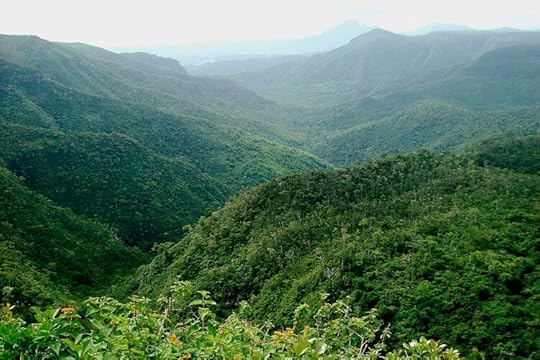
https://commons.wikimedia.org/wiki/Fi...
By Adamina (Flickr: DSC01061) [CC BY 2.0 ], via Wikimedia Commons
3. Chamarel
Chamarel is a village famous for its natural attractions.
Inside the village you can find the Black River Gorges National Park, Chamarel Falls, the Seven Coloured Earths, and more.
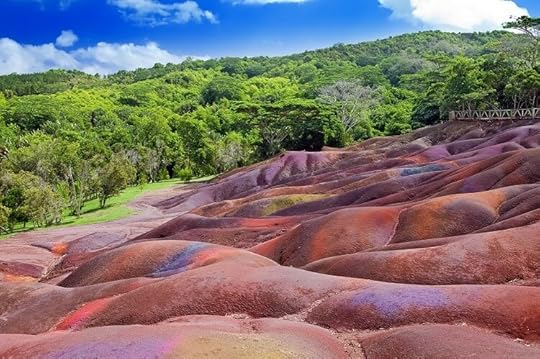
4. La Vanille Crocodile Park
In this park you can view crocodile & giant tortoises from a safe distance. It is in a rainforest valley and also has skinks, turtles, bats, mongooses, monkeys, etc.

By Llewelyn Pritchard via Flickr.com
5. Pamplemousses Botanical Garden
This 37 hectare park has palm trees, giant lily ponds, giant turtles, and some other attractions.
It is the oldest botanical garden in the Southern Hemisphere.
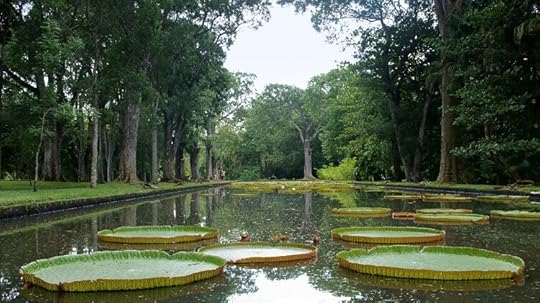
6. Château de Labourdonnais
This 540 hectare private estate is a museum surrounded by sugar cane fields. You will also find a large nursery with fruit trees and other plants.
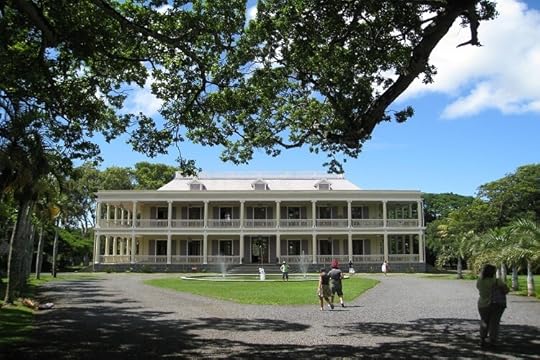
By Matti Mattila via Flickr.com
7. Ile Aux Cerfs
Île aux Cerfs is an island in the largest lagoon of Mauritius. It is 87 hectares of white sand beaches and vegetation. You can get to Ile Aux Cerfs via boat from the village of Trou d’Eau Douce.
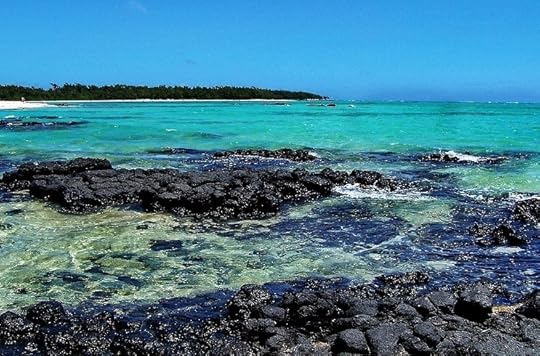
https://commons.wikimedia.org/wiki/Fi... [CC BY-SA 3.0 ], via Wikimedia Commons
8. La Roche Qui Pleure
La Roche Qui Pleure translates to “The Weeping Rock”. This headland got this name because of the 25ft waves that break over it. The crashing of the water gives the look of tears dripping off the rock.
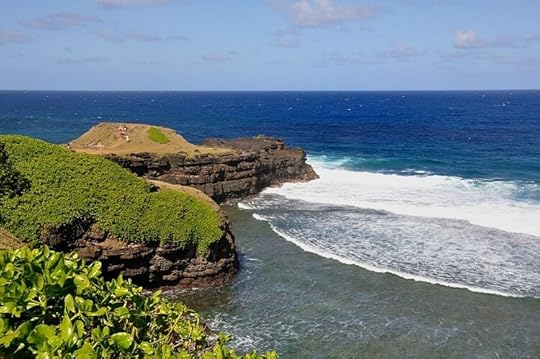
By Simisa (talk · contribs) [CC BY-SA 3.0 ], from Wikimedia Commons
9. Le Souffleur
Le Souffleur is “The Blower”. It is a black lava rock that the sea crashes against. The shape forces water up like a geyser spurting.
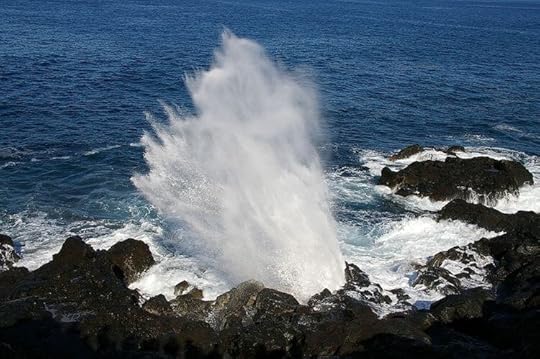
By Jean-Marc Astesana from Voisins le Bretonneux, France. (Le souffleur.) [CC BY-SA 2.0 ], via Wikimedia Commons
10. Grand Bassin
Grand Bassin is a crater lake and sacred Hindu place. They dedicate the lake to Lord Shiva and have temples around it for other gods.
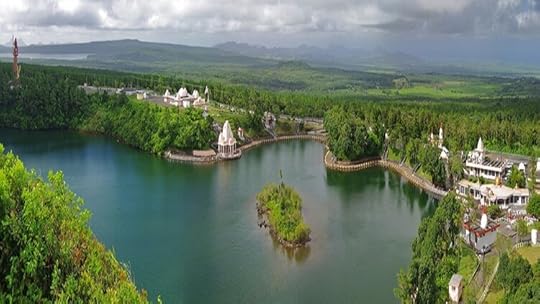
By Jean-Marc Astesana via Flickr.com
Inspired? Pin it for Later↓


The highlights of Mauritius are its natural attractions and culture. And after you have hit the tourist spots, you can spend weeks checking out the pristine coastlines.
Did you enjoy this list of things to do in Mauritius? If so, please share it with your friends.
The post The 10 Best Things to do in Mauritius appeared first on Survive Travel.
August 6, 2018
El Nido Island Hopping Tours, Palawan
There are 5 main tours in El Nido. A, B, C, D, E. Tours A to D are El Nido island hopping tours and tour E is on the mainland. You have many choices for tour companies for each of these tours. They are all very similar though exact El Nido attractions you will go to can vary a little depending on the company.
In this article you will get to see what most of the tour companies offer in each tour. There are short descriptions of each attraction so you can make an informed choice of which tour (s) you would like to do.
I took the points of interest of each tour from a variety of tour company packages and put them together. This means one or two places might be different depending on the company you choose. For example, in tour A, most companies go to either 7 Commandos Beach or Papaya Beach, but not both. You can always ask to include places if it is around the same area.
At the end of the article there are some El Nido tips. It’s a good idea to read these before you book your tours they can save you some time and money.
Contents
Tour A—Lagoon Tour
Tour B—Cave Tour
Tour C—Shrine Tour
Tour D—Beach Tour
Tour E – Land Tour
Other El Nido Attractions
Conclusion
Save BIG on Your Next AdventureGet Your Copy of How to Travel on a Budget Today

How To Travel On A Budget: 52 Budget Travel Tips

Price Disclaimer
El Nido Island Hopping Tours
Tour A–Lagoon Tour
Standard Price: 1,200PHP per person
7 Commandos Beach
7 Commandos Beach is another white sand beach with crystal clear waters. It has coconut trees, rock formations, kayaking, and a beach bar.
No-one really knows how it got its name, but one popular theory is that 7 soldiers got stranded here in WW2.
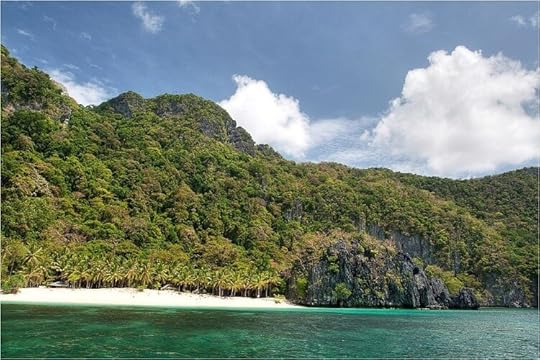
Tuderna [CC BY 3.0 ], via Wikimedia Commons
Papaya Beach
Next to 7 Commandos beach is Papaya Beach. This is a private beach is also open to the public. It has powdery white sand and scenic rock formations.

Shimizu Island
This small snorkeling island gets its name from a Japanese SCUBA diver that died nearby. It has sandy beaches and clear waters.
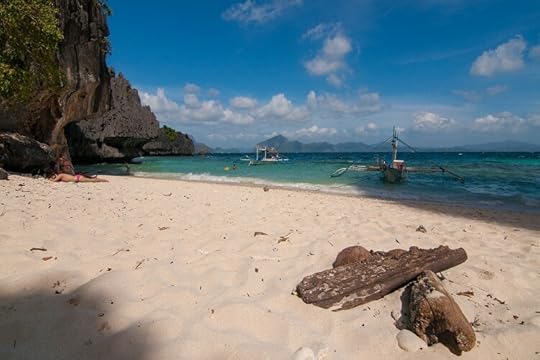
Small Lagoon
Small Lagoon is a great place for snorkeling and it also has kayak rentals. If you only want to swim, then that’s fine too.
Small Lagoon is one of a few beautiful lagoons in El Nido.

Big Lagoon
Big Lagoon is next to, and bigger, than Small Lagoon (what a surprise)! It has emerald color water and mountains on all sides. When people refer to crystal clear water… this is what they mean.
You can come to Big Lagoon for boating, fishing, snorkeling, and more.

Tour B–Cave Tour
Standard Price: 1,300 PHP
Snake Island
In a corner of Bacuit Bay is Snake Island. It gets its name from its S-shaped sandbar that connects it to the mainland.
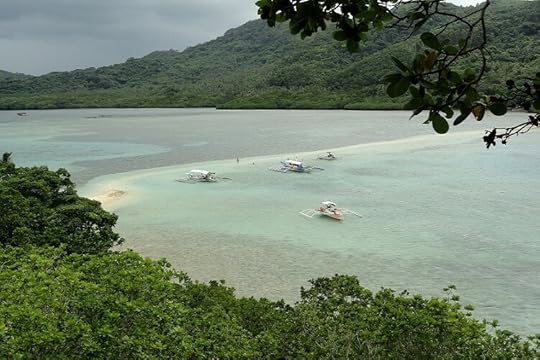
By Fabio Achilli via Flickr.com
Cathedral Cave
Cathedral Cave is a huge cavern inside a rocky outcrop. Unfortunately, the opening is too small for bigger boats to enter, and swimming in is not a good idea since sea snakes live there.
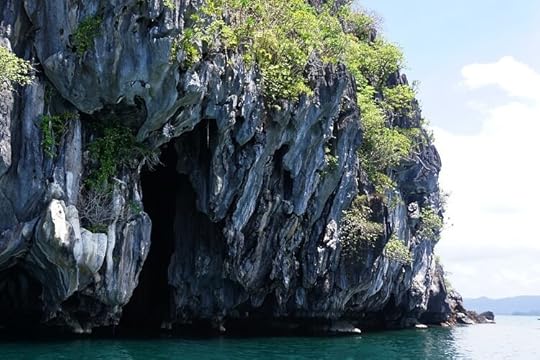
By Lianne Cuneta via Flickr.com
Cudugnon Cave
Cudugnon Cave is an important archaeological site and possibly a Neolithic burial site. Besides human bones, archeologists also found pottery and jewelry from the Sung Dynasty.
Pinagbuyutan Island
With its 300+ meter tall limestone cliffs, this island earns the nickname of “Enchanted Island”. Its beach has powdery white sand and its waters turn from white to green to blue as you get further from the shore. It is also an amazing place to go snorkeling.
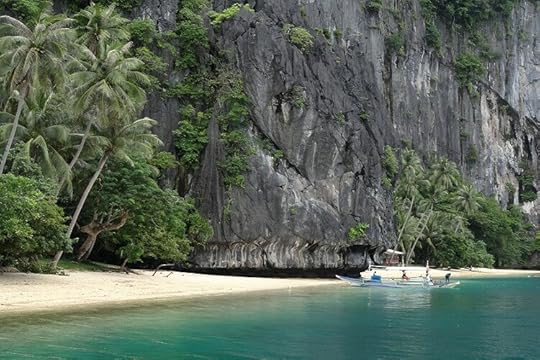
By Fabio Achilli via Flickr.com
Entalula Island
This privately own island is not a default in many tours, but you can request it. It is small and secluded with white sand beaches and nice waters for swimming.
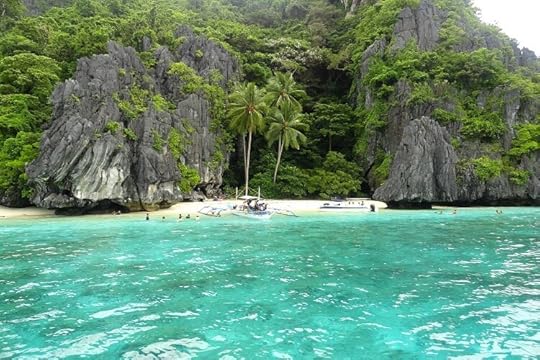
By Fabio Achilli via Flickr.com
Tour C–Shrine Tour
Standard Price: 1,400 PHP.
Talisay Beach
A common place to stop for lunch on your tour, Talisay Beach offers great views while filling your tummy. Afterwards (or before) you can play in the water and there is even some good snorkeling about.
Star Beach
Star Beach is on Tapiutan Island, a short island hop away from Matinloc Shrine. This sandy bottom beach is amazing for snorkeling. It is also has a cliff backdrop, fine white sand, and clear waters.
Hidden Beach
Hidden Beach is a secluded white sand beach on Matinloc Island. It has clear waters and limestone cliffs.
Survivor Sweden left some of their props on this beach.
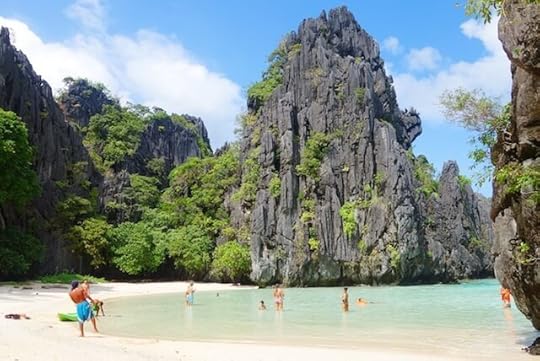
Helicopter Island
The official name of Helicopter island is Dilumacad Island. It looks like a helicopter as you approach it so that’s where the nickname comes from.
Besides its shape, Helicopter Island has a beautiful beach, tall cliffs, and thick rainforest.
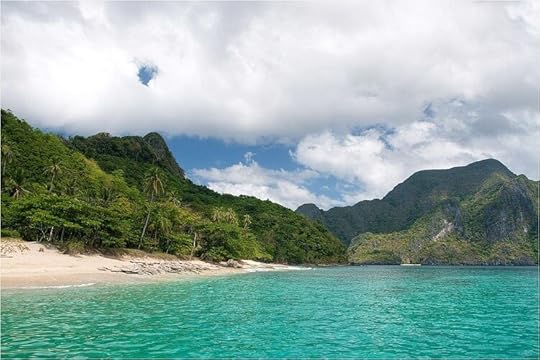
Tuderna [CC BY 3.0 ], via Wikimedia Commons
Secret Beach
Another amazing beach on Matinloc Island is Secret Beach. To get there, you need to swim through an opening in a rock wall. Once inside, limestone cliffs surround you on a beach that is not visible from the open ocean.
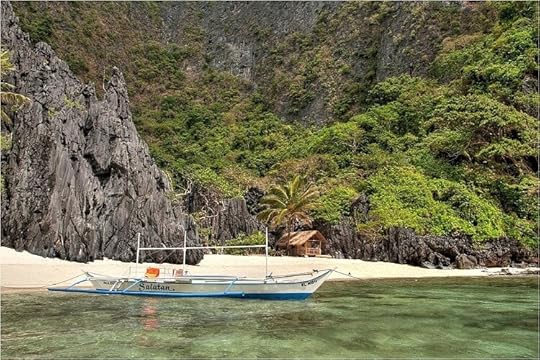
Tuderna [CC BY 3.0 ], via Wikimedia Commons
Matinloc Shrine
Matinloc Shrine is an abandoned shrine between the beach and the cliffs. Built in 1982, it is now in ruin.
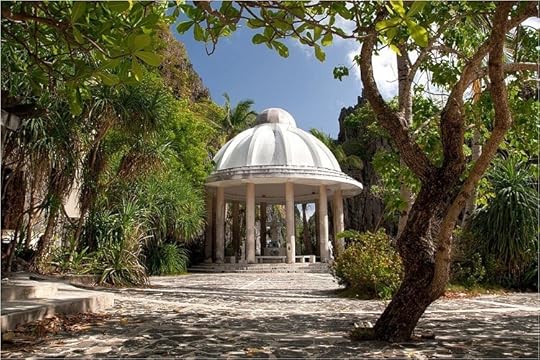
Tuderna [CC BY 3.0 ], via Wikimedia Commons
Tapiutan Strait
Tapiutan Strait has several beaches. Most of which are great for swimming and snorkeling. The Matinloc Shrine is also along this strait.
Payong-Payong Beach
On the SE corner of Matinloc island, is Payong-Payong beach. Yet another white sand beach with limestone cliffs. Some waves can be strong but the water is still okay to swim in. There are also calmer waters if you don’t like the waves.
Tour D–Beach Tour
Standard Price: 1,200 PHP.
Cadlao Lagoon
This picture perfect lagoon is in the largest island in El Nido, Cadlao Island. You can swim, jump into the water from rocks, and go snorkeling.
Besides the lagoon, Cadlao Island has 12 beaches and the highest peak of the El Nido islands. It is also one of the best places to snorkel.
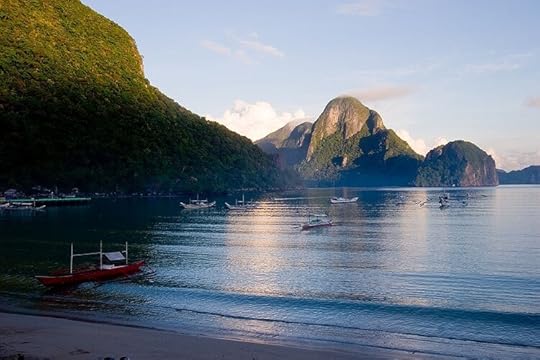
By User: (WT-shared) Jdkoenig at wts wikivoyage [Public domain], from Wikimedia Commons
Bukal Beach
Beauty surrounds this small beach, and it has calm swimming waters.
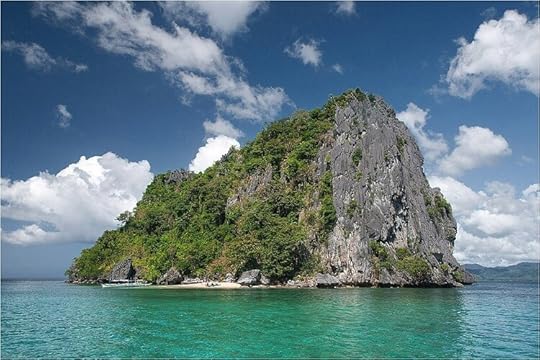
Tuderna [CC BY 3.0 ], via Wikimedia Commons
Pasandigan Beach
This fine, white sand beach has turquoise waters, coconut trees, and a picnic hut. Is is also great for snorkeling.
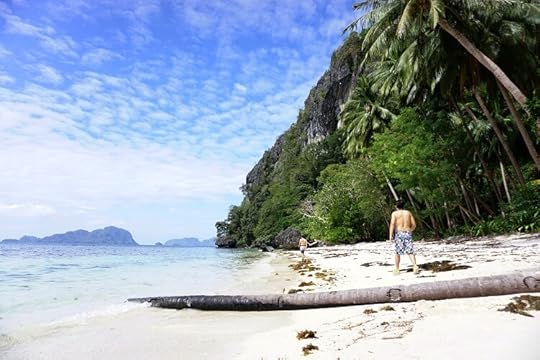
By Lianne Cuneta via Flickr.com
Ipil Beach
Ipil beach is a private beach which belongs to the Ipil Travelodge, but anyone can go there. It has clear waters, palm trees for shade, and some on-beach activities such as table tennis and volleyball.
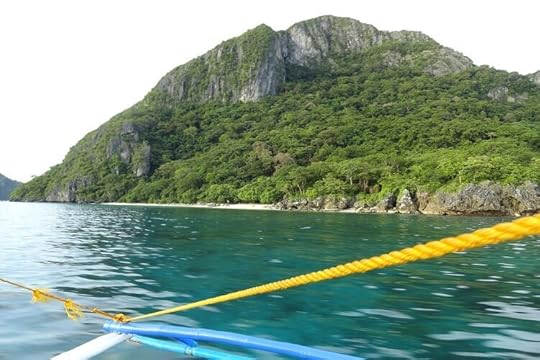
By Fabio Achilli via Flickr.com
Paradise Beach
Paradise Beach is only a short boat ride from the mainland and is a great place to relax. Like many of the beaches in El Nido, it has coconut trees, powder white sand, and pristine waters.
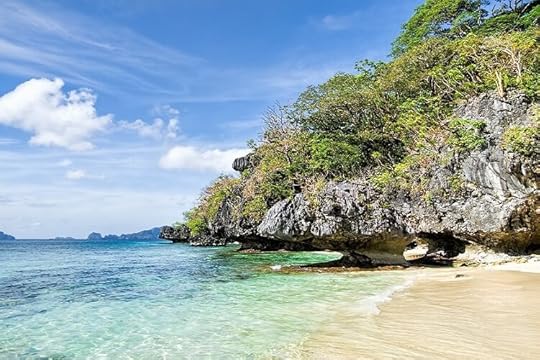
By Dan Lundberg via Flickr.com
Nat-Nat Beach
Nat-Nat Beach is on Cadlao Island and is an ideal spot for picnics. There are huts, calm waters, and some nice scenery.
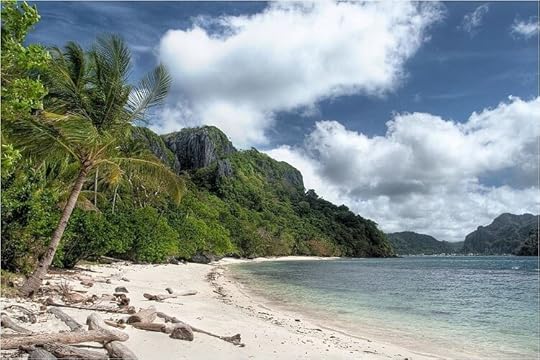
Tuderna [CC BY 3.0 ], via Wikimedia Commons
Tour E – Land Tour
Standard Price: PHP 1,500
Twin Beaches
Often referred to as the most beautiful beach in town, Nacpan is one of the “twin beaches” in El Nido. This 4km long beach is lined with coconut trees and is about a 1 hour drive north of the town. It is a popular beach to swim in.
The other twin is the smaller Calitang beach. It meets Nacpan to the south with a small hill that gives a great view.
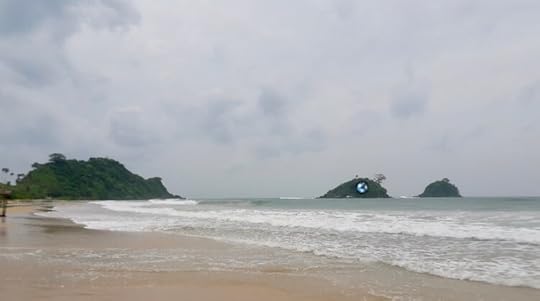
Nacpan Beach
Marimegmeg Beach
Marimegmeg Beach is a golden sand beach on the mainland. One of the best things about it is the zip line to a small island just off-shore.
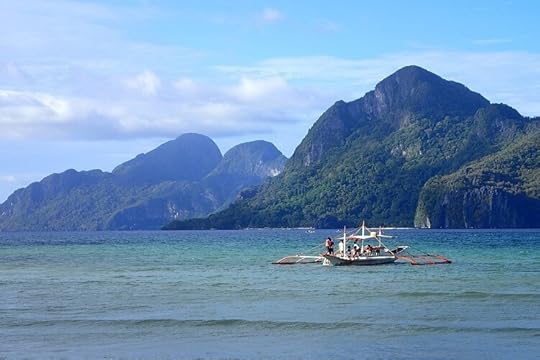
By Firth m [CC BY-SA 4.0 ], from Wikimedia Commons
Nagkalit-kalit Waterfalls
Nagkalit-kalit Waterfalls is about halfway between town proper and the Twin Beaches. To get there is about a 30 minute jungle trek from the main road. It is a great place to hike, see a few waterfalls, and take a refreshing dip.
Other attractions on the Mainland
Here are a few other things you can do on your own or as separate tours on the mainland. A good way to to it is to hire a motorbike for a day or two and check out the things on this list and some from Tour E while you are at it.
Corong Corong Beach
Corong Corong beach is one of the more peaceful beaches in the El Nido area, and it is only 10 minutes south of town proper. It has amazing sunsets and calm shallow waters.
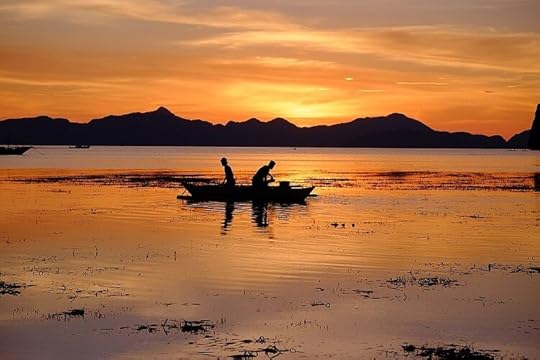
By Xavier Smet xsmet (https://unsplash.com/photos/rdiLBIoSJGY) [CC0], via Wikimedia Commons
Canopy Walk
The canopy walk is near to town proper and is a good way to get a view of the town from above. The other alternative is for the more adventurous and involves trekking up Taraw Cliff.
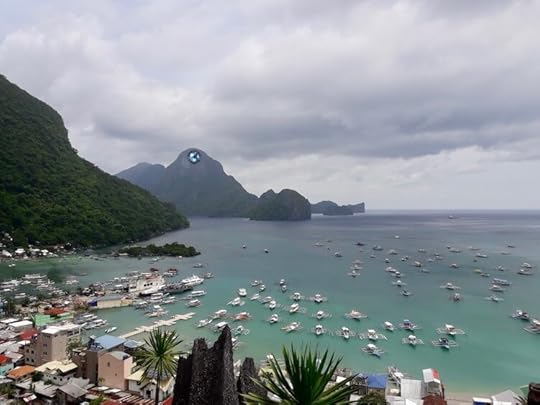
The view from the top of the canopy walk.
Taraw Cliff
Taraw Cliff is a limestone karst looking over town proper. It is an awesome backdrop, the highest peak in the area, and you can climb it!
Ille Cave
Ille Cave is a museum inside a cave. It is an important archeological site. They excavated pottery and animal bones there but they are not on display. Instead, there are informational boards. The cave itself is also interesting.
Makinit Hot Springs
About a 20 minute drive from town proper is Makinit Hot Springs. You can not swim in it, but it’s still interesting to visit.
Kawayway Falls
Kawayway falls is a set of 3 falls, each of which you can swim in. The further you go the less crowded it gets.
The road in is not very good, but tricycles go in. Be careful if you are on a motorbike if its muddy.

Kalye Artisano Artists Village
If you like art then this little village is a nice place to visit. Inside the village are several local artisan shops. Even if you don’t want to shop, looking around the village is nice.

St. Francis of Assisi Parish Church
This is the main Catholic Church in El Nido. El Nido’s Patron Saint, St. Francis, is the Patron of the Environment. Fitting for this ecotourism destination.

Pangko Maritime Museum
This maritime museum is on the East coast of the mainland. It is about the Cuyonon people who originate from Cuyo Island.
A Pangko is the traditional boat of the Cuyonons.
The museum is right on the Sulu Sea which has white sand beaches and amazing snorkeling.
Mt. Mansilawit
Mt. Mansilawit is the highest mountain in the El Nido area. You can see it from the main road about 12km North of the town proper. To climb it is about a 1 hour trek.
Lio Beach
This is one of the more developed beaches in the area. There are bars, restaurants, and tourist shops. A nice place to chill out and a short drive from the town.

Inspired? Pin it for Later↓


Learn the Money Saving Secrets from 15+ Years of TravelGet Your Copy of How to Travel on a Budget Today

How To Travel On A Budget: 52 Budget Travel Tips

Price Disclaimer
Conclusion
As you can see, there is enough to keep you busy in El Nido for at least a week. Even our boat tours were cancelled for 3 days and we still had things to do.
The prices I gave are standard tour prices per person in a group tour. If you have enough people it is worth considering a private boat. If you do, get it from a tricycle driver, as opposed to the tour shop. It ended up costing us 8,000php for 4 adults for Tour A, including lunch. In the shop was double!
Did you find this article on El Nido tours useful? If so, please share it with your friends.
The post El Nido Island Hopping Tours, Palawan appeared first on Survive Travel.
August 5, 2018
How to Find the Best Traveler Accommodation
Here’s my guide on how to find the best traveler accommodation. There are lots of options for finding the best traveler accommodation. The one you choose depends on what you want and how long you want it for. In this article, I will detail my favorites and a few I should have tried but never got around to. It covers:
Hotellook
Couchsurfing
AirBnb
Housesitting
Local Rentals
Volunteering (working for accommodation)
Houseswaps
How to Find the Best Traveler Accommodation
HotelLook
For short stays, this is the first place I go. HotelLook searches all the major hotel comparison sites to find you the best deal. It’s much better than searching one comparison site alone. 99 times out of 100 it finds me the best deal.
It searches all types of accommodation. From dorm beds in hostels to luxury holiday homes, and everything in-between.
Couch Surfing
If you are a people person and want free accommodation, Couchsurfing is for you. I’ve only done it a couple of times… I’m not a people person. But the couple of times I did do it I had good experiences.
What is Couchsurfing? People offer their “couch” for free to other travelers. It is a whole community. It’s great to meet travelers when you are at home also since you can offer your “couch”.
It doesn’t have to be a couch of course. An actual bed is nice, but many people don’t even mind the humble piece of floor.
AirBnb
AirBnB is my go-to when I plan to stay one week or more. Often, booking for at least a week will give you a discount. And it is not rare to get 50%+ off when staying a month or more.
Besides the big discount, I like AirBnb because there are more places with the ability to cook and work.
Get a special discount off your first AirBnb booking here.
House-sitting
If I can get it, this is my preferred way to get traveler accommodation.
House-sitting is like a mixture of couch-surfing and Airbnb. Actually, it is like couch-surfing but with a whole house.
One downfall of being a vagabond for me is not being able to have a pet. And more often than not, a house-sitting gig comes with one. You may also have to do other odd jobs around the place.
In exchange for looking after someone’s house, you get free accommodation. And it’s (usually) better than any hotel room since you will have a kitchen and other home comforts.
There are a few websites to check out for this one. Some are better depending on what country you want to housesit in. Two big ones to start you off are www.TrustedHouseSitters.com and www.Nomador.com.
Local Rentals
Depending on what country you plan to live in, this can be difficult. But if you can do it, its way cheaper than hotels or Airbnb’s.
In some countries, you won’t be able to rent locally unless you are a permanent resident. In most others, you need to make a 6 or 12-month commitment.
Finding a 3-month or even 1-month agreement is possible, especially for a room or bed space. I like to have a whole apartment or small house, but finding them is fairly hard on a short-term basis. I tend to use Airbnb in these cases.
If not, then rent locally. Doing this is different depending on the country. Craigslist, Gumtree, Word of mouth, Facebook groups, etc.
Get accommodation for one week with HotelLook or AirBnb, then use that week to find a place. If you search online, you can often find a place before you go.
These last 2 traveler accommodation options are ones I have not done, but I’ve put them because they are good options.
Volunteering
In exchange for a place to sleep, you work. Often you get fed as well. The jobs can be anything from farm-work, gardening, carpentry, teaching, etc. This can be through a volunteer organization or via an exchange website.
I researched doing this back in my 20s. I even paid the site fee and applied for a few places, but then never did it. Now days there are multiple sites you can use, but the one I checked out was www.WorkAway.info.
House Swap
If I owned a house or even an apartment, I would do this.
It is exactly as it sounds. You have a house, and so does someone else. So you swap.
There are a couple of websites that help with this. HomeExchange is one of the better-known ones.
Inspired? Pin it for Later↓


Well, that’s all the ways I look for accommodation when traveling, and a couple I don’t use too. In general:
For short stays (days) I go with HotelLook
For up to a few weeks I search HotelLook, Airbnb, and housesitting.
For a month or more I will skip HotelLook and prioritise housesitting. Airbnb is my backup.
Finally, for anything over a month, I will also look into local rentals.
Did you find this article on how to find the best traveler accommodation useful? If so, please share it with your friends.
The post How to Find the Best Traveler Accommodation appeared first on Survive Travel.
How to Find the Cheapest Flights in 3 Simple Steps
Here’s my 3-step guide on how to find the cheapest flights. Of course, the cheapest is not always the best. So you can also use this method to find the best flights depending on your criteria. Cost, timing, flight path, etc.
Using this method I find all my flights in under 30 minutes.
Save BIG on Your Next AdventureGet Your Copy of How to Travel on a Budget Today

How To Travel On A Budget: 52 Budget Travel Tips

Price Disclaimer
How to Find the Cheapest Flights
1. Search Adioso – But Don’t Book Through Them
Adioso is a great website to start your search, especially if you don’t have fixed dates or even a fixed destination. It is especially handy to figure out the best combination for return flights. You can put in your destination and give a time frame for your flights, and it will return the best combinations for you.
Note: If you are not flexible on dates, you can skip Adioso and go straight to Jetradar.
2. Search Jet Radar – But Don’t Book Through Them
Take the flight dates you found on Adioso and put them into www.JetRadar.com. JetRadar will often have more choices and/or cheaper flights.
3. Search the Flights on the Airlines Website
Whatever flight you choose from Jetradar, go to that airline’s official webpage and search for the same flight. There is a few reasons for this:
The airline may have the same flights at better times.
Sometimes the flights are cheaper through the airline.
If something goes wrong, it is easier to fix it with the airline direct than it is with a 3rd party.
There are only 2 reasons I would book through JetRadar.com and not the airline directly.
It is much more expensive. If it is only a bit more, I still go with the airline. It is worth the extra for the convenience.
If there are multi-carriers involved. You could book the separate flights with each carrier yourself, which often works out cheaper, but I do not advise this. Not only is it time consuming, but if a flight is delayed it has a bad knock-on effect, and that is all your fault. *If you book it through JetRadar, they will compensate you.
*This is in general. Please read the terms and conditions of any flight you book.
Extra Tips for Finding the Cheapest Flights
Here are some additional tips to help you find cheaper flights:
Search flights in incognito mode. Website cookies keep track of multiple visits and sometimes increase the price for returning visitors. To get incognito mode in Chrome or Safari on Mac hit Shift+Cmd+N. On Windows press Shift+Ctrl+N.
When you find the best flight, book it as soon as possible. The closer you are to the departure date, the more likely the price will increase.
For international flights with domestic connections, it pays to check about booking the connections yourself. Sometimes the cost difference is worth the trouble. If you do book them separately, leave plenty of time for connections. At least 4 hours.
In a Nutshell…
Ok, that’s it. I can usually find the best flights with this method in under 20 minutes. Remember:
Adioso
Jetradar
Airlines official website
Also:
Use an incognito window
Book the flights as soon as possible
Consider booking your own connections on international flights with domestic connections
Inspired? Pin it for Later↓


Learn the Money Saving Secrets from 15+ Years of TravelGet Your Copy of How to Travel on a Budget Today

How To Travel On A Budget: 52 Budget Travel Tips

Price Disclaimer
Did you find this article about how to find the cheapest flights useful? If so, please share it with your friends.
The post How to Find the Cheapest Flights in 3 Simple Steps appeared first on Survive Travel.
August 3, 2018
My Favorite Travel Insurance for Long Term Travel
100% without a doubt my favorite travel insurance for long term travel is World Nomads. I’ve been using them for as long as I can remember for both long and short-term travel.
Why is World Nomads the best travel insurance for long term trips?
Because you can renew or buy a new policy from anywhere in the world.
This is harder to find in other travel insurance companies than you think. Believe me, I’ve tried. I found a few others, but they were crazy expensive. Not only is World Nomads flexible, it is very competitive too.
These 2 reasons alone are why I prefer to use World Nomads, but they also have many other advantages.
#wn-insurance-quote-editor{background:url("https://cdn.worldnomads.net/Content/s... #qqc .input-group {margin-bottom: 0;}.autocomplete.wn-insurance-quote-editor li:hover, .autocomplete.wn-insurance-quote-editor li {list-style: none;} #wn-insurance-quote-editor #selected-destinations li {list-style:none;}.datepicker.wn-insurance-quote-editor {padding: 0;}
Travel Insurance for Long Term Travel
Accessible Worldwide
World Nomads is available to people from 140 countries. Also, it is all online. This means you can buy, renew, and claim from anywhere in the world.
Trusted & Reliable
World Nomads.com is backed by a suite of strong, secure, specialist travel insurers who provide you with great cover, 24 hour emergency assistance and the highest levels of support and claims management when you need it most.
Value for Money
World Nomads allows you to cover only the things you want. For example, for years I only wanted basic emergency cover. Everything I owned was cheap, so I didn’t want to pay extra to cover it. Now I have a more expensive laptop so I want to cover that. No problem. I can add that to my base premium.
Specializes in Adventure Sports
Most of the things I like to do are under the basic cover. Hiking, snorkeling, and general travel. But if you like more adventurous activities, you can get covered for that too. Anything from diving to skiing, to mountain climbing, and more.
Flexibile
I’ve already mentioned these but I want to again. World Nomads is the only travel insurance I have found that allows you to do both these things.
First, you can buy, renew, upgrade, and claim online. And you can do all these things from anywhere in the world. Even while you are traveling. Most companies make you buy your insurance from your home country before you travel.
Second, you can customize your cover much more than other companies let you. There are 3 base levels of cover. Nothing special there. Most companies are the same. But to any of those base levels, you can add cover for a range of adventurous activities and/or precious items. Because you can do this at an individual level, it works out cheaper too.
More Than Insurance
World Nomads also provides other services at no extra cost.
The World Nomads Travel Safety Hub gives members access to the latest travel safety alerts and other travel safety tips.
There are also iPod & iPhone Language Guides and access to an online travel journal.
Exceptional Customer Service
World Nomads prides themselves on customer service. If you have questions, you can contact them directly here.
Inspired? Pin it for Later↓


Travel insurance is VERY important. When I was younger, I would travel without it thinking it was too expensive. Unless you are mega-rich, you can’t afford not to have it. And with World Nomads being so affordable for such quality cover, there is no excuse to put yourself at such a risk.
Click here to get your WorldNomads policy today and have peace of mind while you explore this wonderful world.
Did you find this article about the best travel insurance for long term travel useful? If so, please share it with your friends.
The post My Favorite Travel Insurance for Long Term Travel appeared first on Survive Travel.
The Best Travel Insurance for Long Term Travel
100% without a doubt the best travel insurance for long term travel is World Nomads. I’ve been using them for as long as I can remember for both long and short-term travel.
Why is World Nomads the best travel insurance for long term trips?
Because you can renew or buy a new policy from anywhere in the world.
This is harder to find in other travel insurance companies than you think. Believe me, I’ve tried. I found a few others, but they were crazy expensive. Not only is World Nomads flexible, it is very competitive too.
These 2 reasons alone are why I prefer to use World Nomads, but they also have many other advantages.
The Best Travel Insurance for Long Term Travel
Accessible Worldwide
World Nomads is available to people from 140 countries. Also, it is all online. This means you can buy, renew, and claim from anywhere in the world.
Trusted & Reliable
World Nomads.com uses well-established specialist travel insurers. They have a 24-hour emergency help hotline and a great support and claims department.
Value for Money
World Nomads allows you to cover only the things you want. For example, for years I only wanted basic emergency cover. Everything I owned was cheap, so I didn’t want to pay extra to cover it. Now I have a more expensive laptop so I want to cover that. No problem. I can add that to my base premium.
Specializes in Adventure Sports
Most of the things I like to do are under the basic cover. Hiking, snorkeling, and general travel. But if you like more adventurous activities, you can get covered for that too. Anything from diving to skiing, to mountain climbing, and more.
Every now and again I like to do something more adventurous. Adding it to my existing cover is easy online.
Flexibile
I’ve already mentioned these but I want to again. World Nomads is the only travel insurance I have found that allows you to do both these things.
First, you can buy, renew, upgrade, and claim online. And you can do all these things from anywhere in the world. Even while you are traveling. Most companies make you buy your insurance from your home country before you travel.
Second, you can customize your cover much more than other companies let you. There are 3 base levels of cover. Nothing special there. Most companies are the same. But to any of those base levels, you can add cover for a range of adventurous activities and/or precious items. Because you can do this at an individual level, it works out cheaper too.
More Than Insurance
World Nomads also provides other services at no extra cost.
The World Nomads Travel Safety Hub gives members access to the latest travel safety alerts and other travel safety tips.
There are also iPod & iPhone Language Guides and access to an online travel journal.
Exceptional Customer Service
World Nomads prides themselves on customer service. If you have questions, you can contact them directly here.
Inspired? Pin it for Later↓


Travel insurance is VERY important. When I was younger, I would travel without it thinking it was too expensive. Unless you are mega-rich, you can’t afford not to have it. And with World Nomads being so affordable for such quality cover, there is no excuse to put yourself at such a risk.
Click here to get your WorldNomads policy today and have peace of mind while you explore this wonderful world.
Did you find this article about the best travel insurance for long term travel useful? If so, please share it with your friends.
The post The Best Travel Insurance for Long Term Travel appeared first on Survive Travel.
July 22, 2018
Everything You Need to Know About Moving to Spain

Article contributed by Kayla Kurin.
One of the things I love most about being a freelancer is getting to choose when and where I work. So when the opportunity arose to set up my office from one of Barcelona’s many Chiringuito’s (beach cafes), of course, I said yes. The sea views, the light breeze cooling me from the July heat, and the sounds of people playing beach volleyball, sipping on mojitos, and chatting with friends certainly beat rushing to and from a damp co-working space in London.
With long, sunny days, beaches, mountains, and delicious foods like Pulpo de Galega (Galician Octopus) and Patatas Bravas (spicy fried potatoes), choosing to move to Spain is a no-brainer for a lot of expats or location independent folk.
However, the logistics of moving to Spain for the long-term comes with a set of challenges, the first and last of which is the never-ending bureaucracy (even for citizens of the EU). However, by practicing patience, and making new Spanish speaking friends to help you, you can accomplish everything you need to set up your life in Spain.
Learn the Gritty Truth of Becoming a Digital NomadGet Your Copy of Where Can I Find Wifi Today
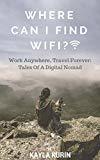
Where Can I Find Wifi?: Work Anywhere, Travel Forever: Tales of a Digital Nomad

Price Disclaimer
Everything You Need to Know About Moving to Spain
Before I get started with the specifics, I want to recommend making your appointments for any paperwork process as early in the day, and as early in the week as possible. No matter how prepared you are, you’re still likely to get asked for something else or be sent to a different office. The earlier you get in, the earlier you can put together the puzzle pieces of your various applications.
So before you pack your bags, what do you need to know about moving to Spain?
Visas
If you’re a citizen of an EU member state, you don’t need to get a visa to stay long-term in Spain. You can skip to the next section!
Everyone else needs a visa to stay in the country for more than 3 months. There are a few different options for visas depending on where you’re from and what kind of work you do. If you’ve been offered a job with a Spanish company, they’ll likely be able to sponsor you and assist you with the visa process. If you’re self-employed, you have a few other options:
Entrepreneurial visa. You’ll need to be able to show that your business is going to create jobs in Spain and have a business plan ready.
Non-lucrative visa. You’ll have to provide proof of a significant amount of savings. You also won’t be able to work locally in Spain, but if you have only international clients or are retired, this can be a good option.
Student visa. Want to improve your Spanish? Signing up for a program that includes 20-hours per week of lessons can help you secure a student visa. There are also many universities in Spain that offer English speaking programs if you’re interested in pursuing a degree. With a student visa, you’re able to work part-time in Spain or continue your remote career.
Youth mobility visa. Your country may have a particular contract with Spain. Check your embassy’s website to see if this visa is available to you. This visa is open to people from participating countries under the age of 35. No proof of work/income is required, but you do need to show that you have a few thousand euros in your bank account, health insurance, and a police report.
You can’t apply for a visa from within Spain, so make sure you sort out the paperwork before you go. Also, leave yourself a buffer. I carefully followed the directions on the Embassy website in Canada only to be told, on arrival at the embassy, the instructions on the website were wrong.
When I asked how long the application would take I got the response: “soon.”
When I tried to specify, “how soon? In a week? In a month?”
“Yes,” the woman responded.
This is excellent preparation for your time living in Spain where patience is needed for everything.

“Camino” (“Path” in Spanish).
Getting your NIE
Your NIE is your foreign identity number that will allow you to open a bank account, get health insurance, apply for a drivers license, work locally, etc.
Depending on which country you’re from and which visa you’re applying for, it’s possible you’ll be able to apply for your NIE from your home country. If this option is available to you, I highly recommend taking it. For everyone else (including EU citizens), you’ll need to make an appointment at your local police stations or foreigners identity office to apply for your NIE.
Turn up to your appointment with the correct paperwork and, ideally, a Spanish speaking friend if your Spanish is not advanced. Be prepared to wait long past your appointment start time to see someone.
Healthcare
Both private and public healthcare in Spain provides a high standard of care. If you don’t qualify for public health insurance, several private insurance options will give you a wide range of coverage for a reasonable cost.
As a student, you qualify for public healthcare only if you’re under 26. Mature students will need to fund their own healthcare costs. If you’re on a work visa, you need to be considered a resident of Spain which usually means staying in the country for 5 consecutive years and then applying for residency. If you’re an EU citizen, all you need is your NIE and EHC(European Health Card) to access public healthcare.
I recommend using Sanitas Healthcare for expats looking for private health coverage as they have English speaking customer services representatives and are knowledgeable on your plan requirements based on the visa you’re applying for.

Statue of Colombus
Banking
The easiest way to get a bank account is to inquire with your bank in your home country. If you currently bank with an international bank, they may have a branch in Spain and may allow you to set up your account before leaving.
If you need to open a bank account in Spain, you’ll need your passport with your visa or proof of residence, your NIE, proof of address, and proof of employment. Double check with your chosen bank when you make an appointment to set up the account to make sure they don’t require any extra documentation.
Most banks will have English speaking tellers available so you can request this when you book your appointment!
Finding a Place to Live
The difficulty of flat hunting and the value of real estate varies widely within Spain. In Barcelona, rents are high, and space is limited. In Valencia, it’s easy to find a 2 or 3 bedroom flat for a very reasonable cost.
The main site people use to find apartment rentals and properties to buy is idealista.com. You can also check Badi, for finding a roommate, or explore expat Facebook groups — there are many dedicated to rental listings in Spain.
You’ll also have the option to work with an agency to help you find an apartment. If you get a good agent, this can take a lot of the hassle out of finding an apartment. However, agency fees are usually the equivalent of 1-2 months rent, so depending on your budget, and how long you plan on staying, it may or may not be worth it for you to use an agency.

Language
While Spanish (Castellano) is the official language of Spain, depending on where you choose to live, it may not be the native or primary language spoken.
In the northeast you have Catalan, and moving west you’ll find yourself in Basque country, and then Galacia, each of which has their own distinct language. If you’re going to a part of the country where Spanish isn’t the primary language, don’t panic, pretty much everyone in Spain speaks Spanish (and most speak at least a little bit of English). But a little effort to learn local phrases such as ‘hello’, ‘goodbye’, ‘please’, and ‘thank you’ in the local language goes a long way. The distinct regions in Spain are very proud of their cultural heritage and will appreciate foreigners who try to learn more about their history and language.
Remember, these aren’t just dialects, they’re entirely different languages — and if you refer to them as a dialect of Spanish, you’re sure to offend.
While getting your documentation in line in Spain can sometimes feel daunting or like you’re moving in Kafka-esque circles, it’s helpful to take a break (remember, nothing in Spain moves quickly, so you don’t have to either) and head to one of Spain’s many outdoor cafe’s for a litre of Sangria and a plate of tapas and enjoy the adventure.
Author Bio

Kayla Kurin is a writer, yogi, and constant traveler. Originally from Canada, she’s traveled, lived, and worked in over 40 countries. Kayla will attempt to swim in any body of water she sees and has never met a 1 euro bottle of wine she didn’t like.
Follow along with Kayla’s adventures on Twitter and Instagram or learn how you can work remotely and travel the world with her new book: Where Can I Find Wifi?: Work Anywhere, Travel Forever: Tales of a Digital Nomad.
Did you find this information about moving to Spain useful? If so, please share it with your friends.
The post Everything You Need to Know About Moving to Spain appeared first on Survive Travel.



